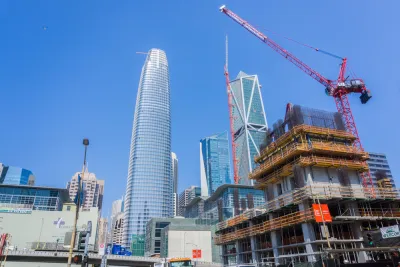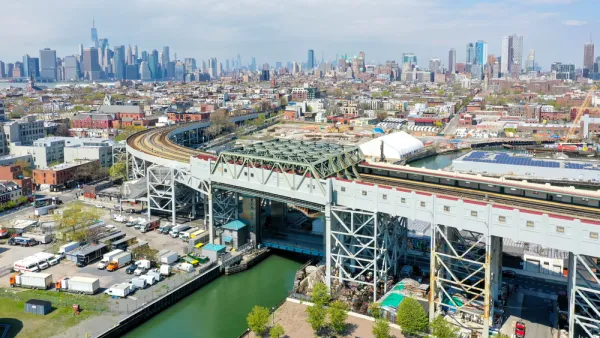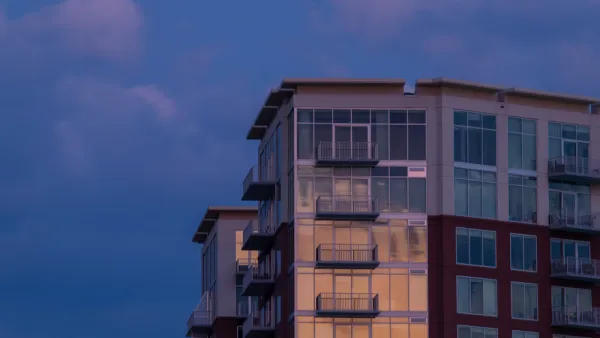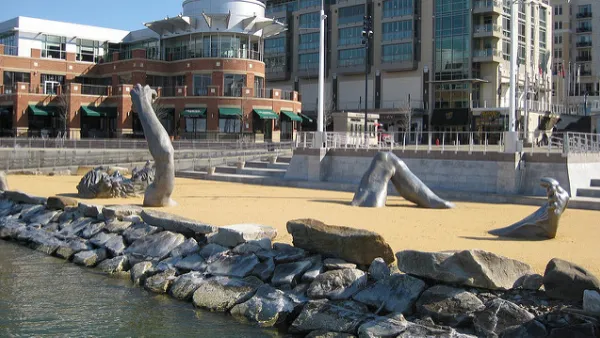YIMBYs are describing the jobs-housing imbalance represented in the Central SoMa Plan as reminiscent of the housing policies of cities farther down the Peninsula.

"For the first time since San Francisco’s 1970’s downtown highrise boom, activists are demanding that new office space—-in this case in Central SOMA— be balanced by new housing," reports Randy Shaw.
The advocates, in this case, are YIMBYs, with a position on the Central SoMa Plan clearly explained in an opinion piece by Joe Rivano Barros in the SF Examiner.
Shaw starts from an assumption that San Francisco’s affordability crisis resulted from decades of adding jobs but not housing. "Activists see this mistake repeating in a Central SOMA plan adding 40,000-50,000 jobs and only 7000 housing units." YIMBYs see that ratio as a formula for displacement and gentrification.
Yet, according to Shaw, "Mission activists and D9 Supervisor Hillary Ronen are aggressively fighting to stop housing from being built on a Laundromat at Mission and 25th Streets." That kind of housing development opposition, whether from self-interest or more communitarian concerns, isn't afforded to proposals that would add many jobs without commensurate housing units: "neither are battling a Central SOMA plan which will unquestionably drive up Mission rents and evictions."
The article also examines the question of why there's a lack opposition to the plan, as well as the position of a group of candidates for the supervisor's position in District 6.
As for the details of the Central SoMa Plan, J.K. Dineen reported on the key components of the plan at the end of February 2018: "[the plan] would dramatically raise height limits in portions of a 17-block zone that stretches from close to Market Street south to Townsend Street, and from Second Street west to Sixth Street.” According to Shaw, "[the] plan calls for two forty story condo towers at Fourth and Townsend, and 3.1 million square feet of new office space overall. It’s 20 million square feet of development also includes 2,310 affordable housing units, 33 percent of the total."
FULL STORY: CENTRAL SOMA EXPOSES SF’S POLITICAL IDENTITY CRISIS

National Parks Layoffs Will Cause Communities to Lose Billions
Thousands of essential park workers were laid off this week, just before the busy spring break season.

Retro-silient?: America’s First “Eco-burb,” The Woodlands Turns 50
A master-planned community north of Houston offers lessons on green infrastructure and resilient design, but falls short of its founder’s lofty affordability and walkability goals.

Delivering for America Plan Will Downgrade Mail Service in at Least 49.5 Percent of Zip Codes
Republican and Democrat lawmakers criticize the plan for its disproportionate negative impact on rural communities.

Test News Post 1
This is a summary

Test News Headline 46
Test for the image on the front page.

Balancing Bombs and Butterflies: How the National Guard Protects a Rare Species
The National Guard at Fort Indiantown Gap uses GIS technology and land management strategies to balance military training with conservation efforts, ensuring the survival of the rare eastern regal fritillary butterfly.
Urban Design for Planners 1: Software Tools
This six-course series explores essential urban design concepts using open source software and equips planners with the tools they need to participate fully in the urban design process.
Planning for Universal Design
Learn the tools for implementing Universal Design in planning regulations.
EMC Planning Group, Inc.
Planetizen
Planetizen
Mpact (formerly Rail~Volution)
Great Falls Development Authority, Inc.
HUDs Office of Policy Development and Research
NYU Wagner Graduate School of Public Service





























